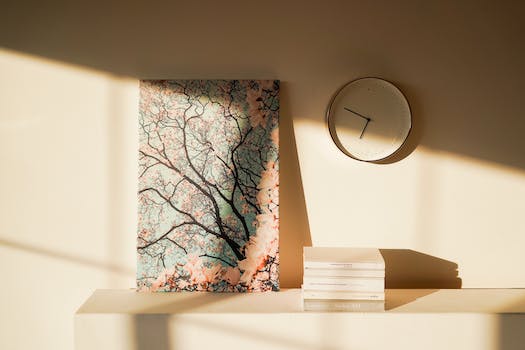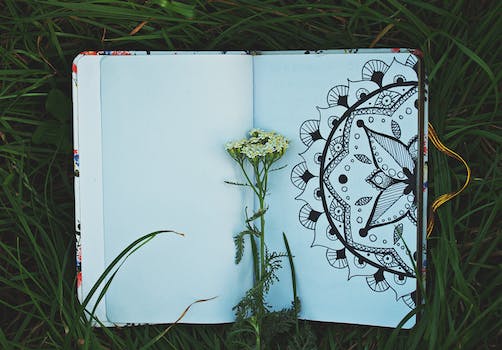

-
Table of Contents
Unlock Your Creativity with the Beginner's Guide to Pixel Art
Introduction
The Beginner's Guide to Pixel Art is a comprehensive resource designed to introduce individuals to the world of pixel art. This guide provides step-by-step instructions, tips, and techniques for creating pixel art from scratch. Whether you are a complete beginner or have some artistic experience, this guide will help you develop the necessary skills and knowledge to create stunning pixel art. From understanding the basics of pixel art to mastering advanced techniques, this guide covers everything you need to know to get started on your pixel art journey.
Understanding the Basics of Pixel Art
Pixel art is a unique form of digital art that has gained popularity in recent years. It is characterized by its use of small, square-shaped pixels to create images. This art form has a distinct retro feel, reminiscent of early video games and computer graphics. If you are new to pixel art and want to learn the basics, this beginner's guide will provide you with a solid foundation.
To understand pixel art, it is essential to grasp the concept of pixels. Pixels are the smallest units of a digital image, and they are arranged in a grid-like pattern. Each pixel can be assigned a specific color, resulting in a mosaic-like appearance when viewed as a whole. The limited number of pixels used in pixel art is what gives it its distinctive blocky look.
One of the first things to consider when creating pixel art is the canvas size. Unlike traditional art forms, pixel art is often created on a small scale. This is because the limited number of pixels available requires artists to work within specific constraints. Common canvas sizes for pixel art range from 16x16 pixels to 64x64 pixels, although larger sizes can be used for more detailed pieces.
Choosing the right color palette is another crucial aspect of pixel art. Due to the limited number of pixels, it is essential to select colors that work well together and convey the desired mood or atmosphere. Many pixel artists opt for a limited color palette to maintain consistency and create a cohesive piece. Tools such as color pickers and color palettes can be used to help select and organize colors effectively.
When creating pixel art, it is important to pay attention to detail. Each pixel plays a significant role in the overall composition, so precision is key. Artists often zoom in on their canvas to work on individual pixels, ensuring that each one is carefully placed. This attention to detail is what gives pixel art its charm and allows for intricate designs despite the limited resolution.
Another aspect to consider in pixel art is shading and highlighting. Due to the blocky nature of pixels, shading and highlighting can be challenging. However, with practice, artists can create the illusion of depth and dimension. Techniques such as dithering, which involves using patterns of pixels to create the appearance of additional colors, can be used to enhance shading and highlighting in pixel art.
Pixel art can be created using various software and tools. Some popular options include Aseprite, GraphicsGale, and Photoshop. These programs offer features specifically designed for pixel art, such as the ability to work with individual pixels and create animations. Additionally, there are online communities and forums dedicated to pixel art, where artists can share their work, seek feedback, and learn from others.
In conclusion, pixel art is a unique and captivating form of digital art that has gained popularity in recent years. Understanding the basics of pixel art, such as the concept of pixels, canvas size, color palettes, attention to detail, shading and highlighting, and the tools available, is essential for beginners. With practice and dedication, anyone can create stunning pixel art pieces that evoke nostalgia and showcase their creativity. So, grab your digital canvas and start exploring the world of pixel art today!
Essential Tools and Techniques for Creating Pixel Art

Pixel art is a unique form of digital art that has gained popularity in recent years. It is characterized by its use of small, square-shaped pixels to create images with a retro, pixelated look. If you are a beginner interested in trying your hand at pixel art, it is important to familiarize yourself with the essential tools and techniques used in this art form.
The first tool you will need is a pixel art software. There are many options available, both free and paid, that offer a range of features to help you create pixel art. Some popular choices include Aseprite, GraphicsGale, and Pixilart. These software programs provide a canvas for you to work on, as well as tools such as a pencil, brush, and eraser to help you create and edit your pixel art.
Once you have chosen your software, it is important to understand the basic techniques used in pixel art. One of the most fundamental techniques is the use of a limited color palette. Unlike traditional digital art, pixel art typically uses a small number of colors, often limited to 16 or 32. This limited palette helps to create the distinctive pixelated look of pixel art and adds to its retro charm.
Another important technique in pixel art is the use of dithering. Dithering is the process of using different colored pixels to create the illusion of additional colors or shades. By strategically placing pixels of different colors next to each other, you can create the appearance of a wider range of colors and add depth to your pixel art.
In addition to dithering, understanding how to create smooth lines and curves is crucial in pixel art. Due to the nature of working with square pixels, creating smooth lines and curves can be challenging. However, there are techniques you can use to achieve this. One such technique is called anti-aliasing, which involves adding intermediate colors along the edges of lines or curves to create a smoother appearance.
When creating pixel art, it is also important to consider the size and resolution of your artwork. Pixel art is often created at a small scale, with each pixel representing a single point of color. This means that the level of detail you can achieve is limited by the size of your canvas. It is important to keep this in mind when planning your artwork and to choose a canvas size that allows for the level of detail you desire.
Finally, it is important to practice and experiment with different techniques to improve your pixel art skills. Pixel art is a unique art form that requires patience and attention to detail. By practicing regularly and exploring different techniques, you can develop your own style and create pixel art that is truly unique.
In conclusion, if you are a beginner interested in pixel art, it is important to familiarize yourself with the essential tools and techniques used in this art form. From choosing the right software to understanding color palettes, dithering, and creating smooth lines, there are many aspects to consider. By practicing regularly and experimenting with different techniques, you can develop your skills and create pixel art that is both visually appealing and unique. So, grab your pixel art software and start creating!
Tips and Tricks for Improving Your Pixel Art Skills
Pixel art is a unique form of digital art that has gained popularity in recent years. With its retro aesthetic and nostalgic appeal, many artists are drawn to the challenge of creating intricate and detailed images using only a limited number of pixels. If you're a beginner looking to improve your pixel art skills, here are some tips and tricks to help you on your journey.
First and foremost, it's important to understand the fundamentals of pixel art. Unlike traditional forms of art, pixel art relies on a grid-based system where each pixel represents a single point of color. This means that every pixel counts, and precision is key. Familiarize yourself with the basic tools and techniques used in pixel art, such as the pencil tool for drawing and the color palette for selecting colors.
One of the most important aspects of pixel art is color choice. Since you have a limited number of pixels to work with, it's crucial to choose colors that will effectively convey your desired image. Consider the mood and atmosphere you want to create, and select a color palette that reflects that. Experiment with different shades and hues to find the perfect combination that brings your pixel art to life.
Another tip for improving your pixel art skills is to study and analyze existing pixel art pieces. Take the time to examine the work of experienced pixel artists and try to understand their techniques and approaches. Pay attention to how they use colors, shapes, and shading to create depth and dimension in their artwork. By studying and learning from the masters, you can gain valuable insights and inspiration for your own creations.
In addition to studying existing pixel art, practice is key to improving your skills. Set aside dedicated time each day to work on your pixel art projects. Start with simple designs and gradually challenge yourself with more complex compositions. Don't be afraid to make mistakes – learning from them is an essential part of the creative process. With each new project, you'll gain more experience and confidence in your pixel art abilities.
When it comes to creating detailed and intricate pixel art, zooming in is your best friend. By zooming in on your canvas, you can work on smaller details with greater precision. This allows you to add finer lines, textures, and shading to your artwork. Remember to regularly zoom out to see how your pixel art looks at different scales, as this will help you ensure that your composition is balanced and visually appealing.
Lastly, don't forget to have fun and experiment with different styles and techniques. Pixel art is a versatile medium that allows for endless creativity. Try out different pixel sizes, dithering techniques, and animation effects to add variety and interest to your artwork. Don't be afraid to push the boundaries and think outside the box – after all, pixel art is all about embracing limitations and finding innovative ways to work within them.
In conclusion, improving your pixel art skills takes time, practice, and a willingness to learn. By understanding the fundamentals, studying existing pixel art, and dedicating time to practice, you can develop your own unique style and create stunning pixel art pieces. Remember to have fun and enjoy the process – pixel art is a journey of creativity and self-expression. So grab your digital canvas and start creating pixel-perfect masterpieces today!
Q&A
1. What is pixel art?
Pixel art is a form of digital art where images are created using small, square-shaped pixels to form a larger image.
2. What software can be used for creating pixel art?
There are several software options available for creating pixel art, including Aseprite, GraphicsGale, and Pixilart. Additionally, some general-purpose graphic editors like Photoshop and GIMP can also be used.
3. What are some key techniques for creating pixel art?
Some key techniques for creating pixel art include using a limited color palette, working at a low resolution, using dithering to create smooth gradients, and employing shading and highlighting techniques to add depth and dimension to the artwork.
Conclusion
In conclusion, the Beginner's Guide to Pixel Art is a valuable resource for individuals interested in learning the fundamentals of pixel art. It provides clear explanations, step-by-step tutorials, and practical tips to help beginners develop their skills and create visually appealing pixel art. Whether for personal enjoyment or professional purposes, this guide serves as a comprehensive starting point for anyone looking to explore the world of pixel art.












